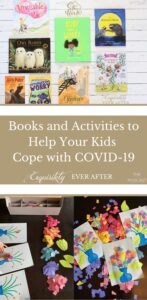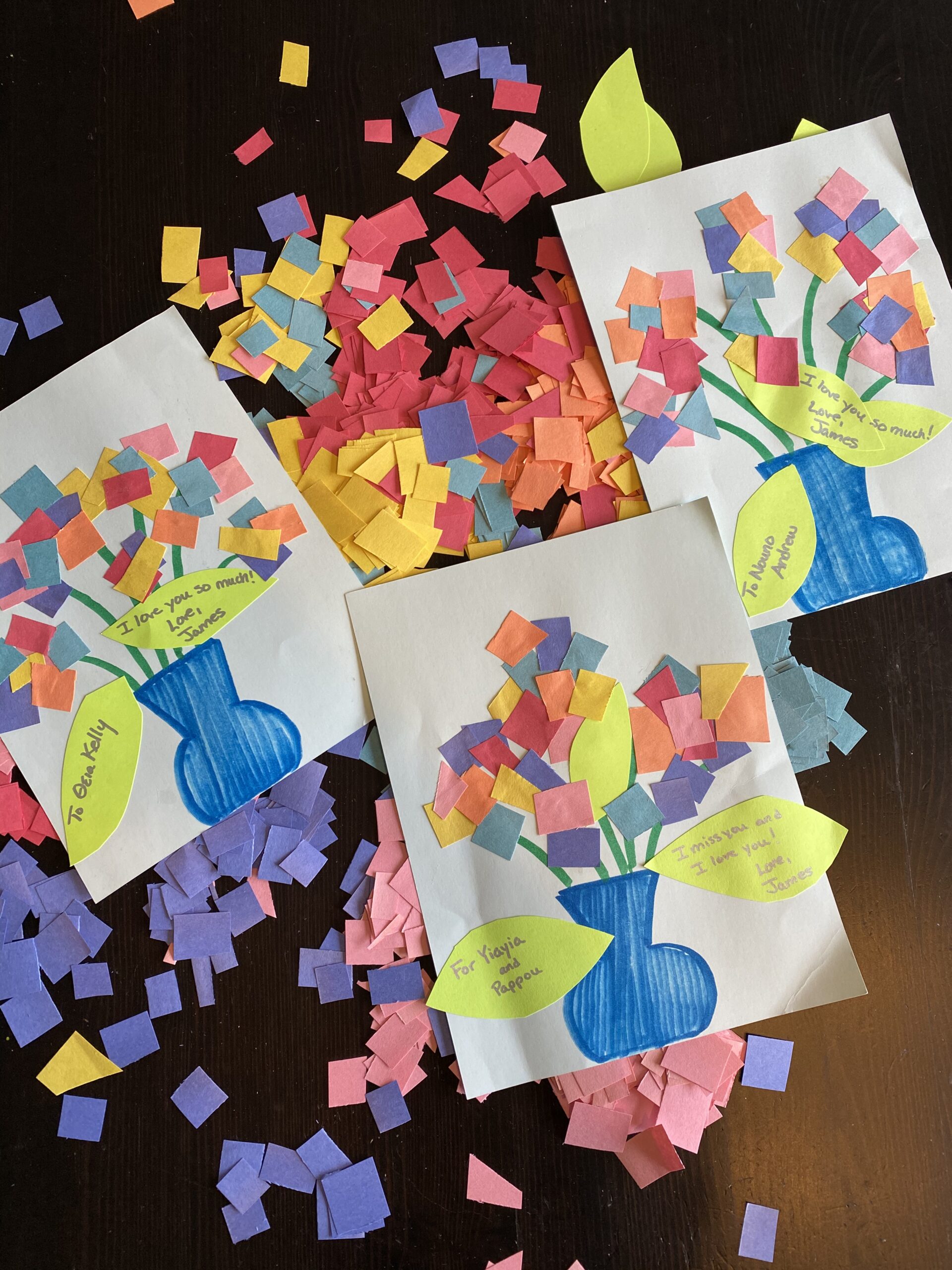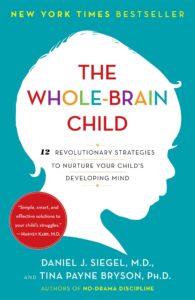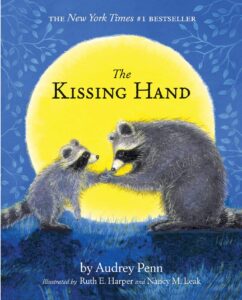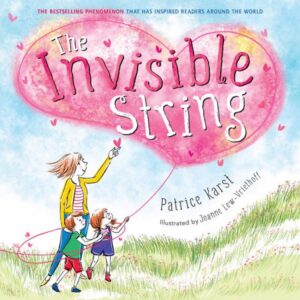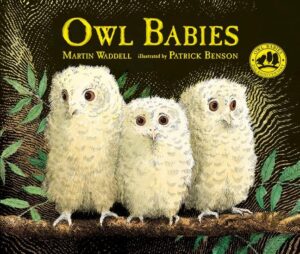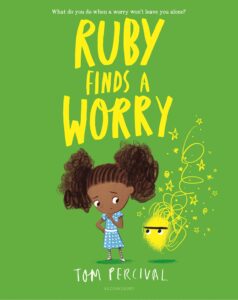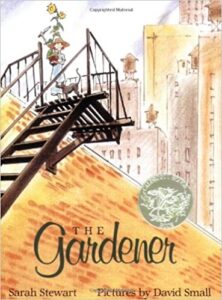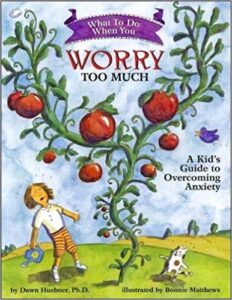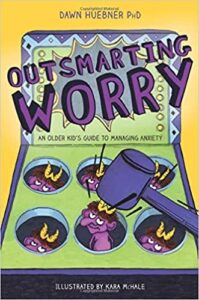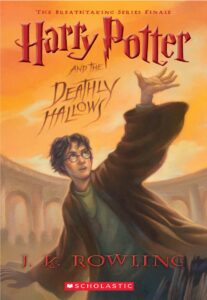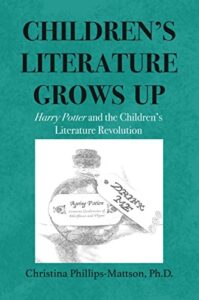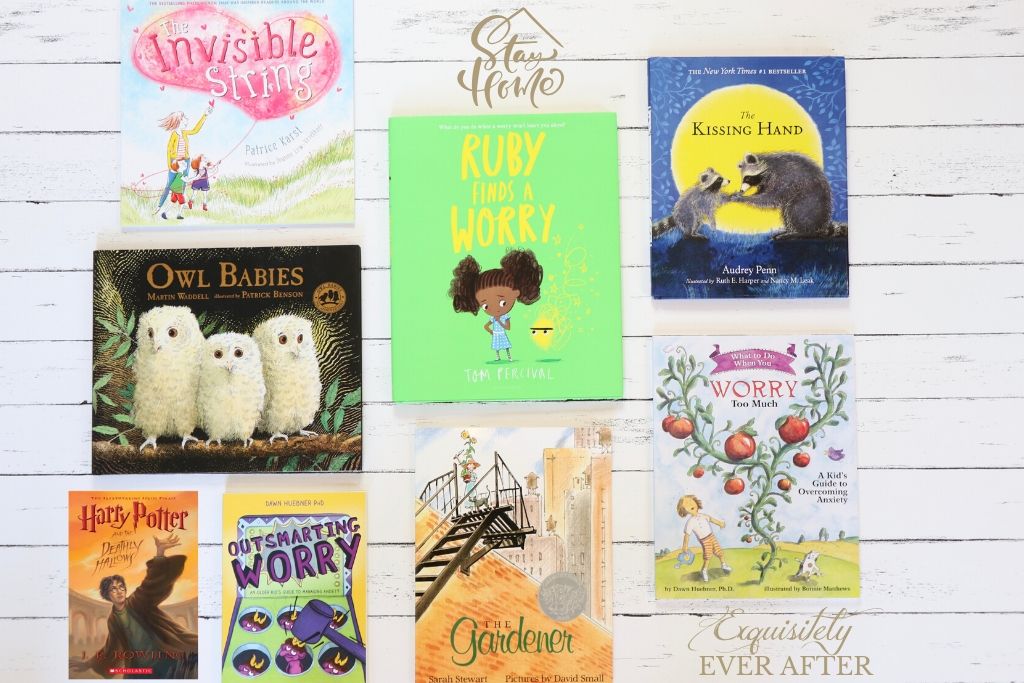
Some links are affiliate links. Please see more here.
SUMMARY: Today’s episode centers around picture books that deal with separation and the anxiety that can come with it. One of the hardest things for our children right now is the necessary separation from their grandparents, extended family, and friends due to the threat of the corona virus. I’ve compiled a list of 8 children’s books that explore these topics and in this episode I discuss some strategies on how to use these books to help your kids cope with social distancing and anxiety about the global pandemic. I also explain why reading is such an important, helpful tool for children to assist them in naming their feelings and reframing their worries and fears. As Mr. Rogers famously put it, what is mentionable is manageable and it is my hope that by reading and discussing these books with your children you can help them respond calmly, courageously, and capably to this unprecedented situation at hand.
And please do let me know in the comments if there are any books that have been helping your family cope with COVID-19 and life in isolation. Take care, keep safe, and keep reading!
Listen to the Podcast Episode:
Books Mentioned in this Episode:
The Whole-Brain Child by Dr. Dan Siegel and Dr. Tina Payne Bryson
*The Kissing Hand by Audrey Penn
*The Invisible String by Patrice Karst, illustrated by Joanne Lew-Vriethoff
*Owl Babies written by Martin Waddell, illustrated by Patrick Benson
*Ruby Finds A Worry by Tom Percival
*The Gardener by Sarah Stewart, illustrated by David Small
*What to Do When You Worry Too Much: A Kid’s Guide to Overcoming Anxiety (What-to-Do Guides for Kids) by Dr. Dawn Huebner, illustrated by Bonnie Matthews
*Outsmarting Worry: An Older Kid’s Guide to Managing Anxiety by Dr. Dawn Huebner, illustrated by Kara McHale
*Harry Potter and the Deathly Hallows by J.K. Rowling
Children’s Literature Grows Up: Harry Potter and the Children’s Literature Revolution by Christina Phillips-Mattson (me!)
Note: Books marked with * are the focus books of this episode.
Activities/Crafts Mentioned In This Episode:
Podcast Transcript:
Hello Everyone! Welcome to Exquisitely Ever After, a podcast where we talk about reading children’s literature to cultivate kind, intelligent, and successful kids. I’m your host, Christina Phillips-Mattson. I have a Masters and a PhD in children’s and young adult literature from Harvard University and I am a writer, educator, and a mother of two little boys, a three-year-old named James and a one-year-old named Luke.
So today we’re going to talk about picture books that deal with separation and the anxiety that can come with it. It is a really, really tough and uncertain time in the world right now. The corona virus has spread rapidly and most countries, including our own, were underprepared for the magnitude of this health crisis, and it is really difficult for us adults to cope with what’s happening, let alone our kids. And one of the hardest things for our children right now is the necessary separation from their grandparents, extended family, and friends. I know from my own children’s experience, they aren’t really old enough to understand why this is happening and why we’re all social-distancing, so as the weeks go on, they have been growing increasingly sad, worried, and upset about not seeing my parents and siblings, whom they’re used to seeing every day.
SO, what I’ve done is compiled a list of 8 children’s books that explore this topic of separation as well as the worry and anxiety that can come with it. And I’ve been reading these books to my kids in order to help them cope with what is going on and to help them name their feelings and reframe their worries and fears. And I thought I’d share this list–as well as some strategies on how to use these books to help your kids—with you. And just a reminder, I will always list all of the books that I mention in the shownotes so you don’t have to worry about pausing to write them down. This week’s episode’s books, as well as the template for the social distancing flower delivery activity that we came up with, can be found at www.exquisitelyeverafter.com/episode3.
Okay, so first I want to explain why reading can be such an important, helpful tool for children right now to help them cope with what’s happening with COVID-19 and its effect on their daily lives. Current brain research tells us that storytelling—turning our experiences into narrative—can help us better process those experiences and also reframe them in order to help us find meaning in them. And this applies to children as well as adults. Drs. Dan Siegel and Tina Payne Bryson have a wonderful book called The Whole-Brain Child which I highly recommend, that talks about this idea of “name it to tame it” in detail: how to name the inner experience your child is having in order to tame it and help your child regain control of his or her emotions and be able to go on with their daily routines in a healthy, balanced way. It’s obviously more complicated than this, but basically what happens is that the left hemisphere of the brain names and narrates what the right hemisphere is experiencing, and this links the two sides of the brain and enables the child’s whole system to calm down. So for an everyday example: let’s say your preschooler falls off a swing and scrapes his hands pretty badly and you notice that his mind continues to revisit the experience either because he keeps remarking on his injured hands or suddenly doesn’t want to go back on the swing, by asking your child to narrate what happened, he is able to make sense of the experience and thus he is better able to cope with his emotions and the fear that he felt and calm down. So, to put this into practice, you could say, simply, “You still look very upset. Could you tell me what happened again?” And he will respond something like, “I was swinging and kicking my legs so fast that I slipped off the swing” And you say, “Yes, you slipped off the swing and fell on the ground.” and then he might say, “Yes, I fell on the ground and I hurt my hands and I cried!” And then you say, “Yes, it really hurt when you fell. And then what happened?” And he says, “You came and picked me up and took me inside.” And you say, “Yes, I picked you up right away and then we went inside to wash your scraped hands to get the dirt off of them so that I could put the bandages on them. Then what happened?” And he’ll say “You put my Daniel Tiger band-aids on my hands and hugged me.” And then you can say, “Yes, and then you felt better and we went back outside. You went down the slide and played with your spyglass. You really felt better after we cleaned you up and put on the Band-Aids. I love that O the Owl Band-Aid especially.” And then you move on until your child again shows some sign that he is revisiting the experience, at which point you help him tell the story again until it just becomes another one of his life experiences and not something that he dwells upon or fears. By helping our children to integrate the distinct parts of their brains, we help them respond calmly and capably to the situation at hand.
But what’s interesting for our purposes today is that reading children’s books can work in almost the same way. The act of reading can actually reconfigure our brain networks, enhancing connectivity in the brain as well as improving brain function, which helps us to work through our own problems by working through someone else’s, even if that someone is fictional. In this way, reading can become a tool that we use to help kids make sense of their inner experiences by watching another character make sense of hers. Dan Siegel and Tina Payne Bryson tell us that our brains are molded by experiences, and new findings in the field of neuroplasticity support the perspective that parents can directly shape the unfolding growth of their child’s brain according to what experiences they offer them. So, it follows that if we offer our child stories that give them a wide variety of experiences to consider and contemplate and work through successfully alongside the characters, we help them to develop a resilient and well-integrated brain.
This is especially helpful right now because our experience with this virus is still ongoing. We aren’t yet at a place where we can narrate the entirety of our experience and make sense of it, because we’re still in the thick of it. And unfortunately, it might even come back again in the fall. So again, that’s where books come in. Choosing quality books that show us how to respond to situations with courage, resourcefulness, compassion, and resilience can help give us that reassurance and meaning and closure that we are seeking when we can’t yet find it in our own lives.
Okay, so now onto the books:
First off, my go-to book for small children about separation was a book about a raccoon named Chester who goes off to school for the first time and has to leave his mother, so she comes up with a little secret gesture to keep them connected while they’re apart. But this book is called The Kissing Hand and now I’m like, oh my god, Chester, DON’T TOUCH YOUR FACE! Gah! Yikes. So even though I love the whole idea of each person kissing the other’s palm before they separate and then, if they feel lonely, touching their palm to their cheek to feel the other’s presence, it’s not the most appropriate gesture for the current state of the world. However, The Kissing Hand is still an excellent book for addressing the anxiety that comes with separation. Plus, the book’s overall concept—the idea that love is a tangible energy that we keep with us even when we’re physically separated—is profoundly comforting to children, so I still definitely recommend it, but maybe with some modifications. For example, you might want to come up with a different, unique gesture that doesn’t involve touching your face or getting anything near your eyes, nose, or mouth. What we’re doing in our family is putting three fingers together on our right hand (our thumbs, forefingers, and middle fingers) and touching our hearts with them. My preschool-aged son, James, has started doing this at the end of every FaceTime with my parents and siblings and it makes saying goodbye to them a lot easier. My mom will say, “I’m holding my heart, and he’ll respond, I’m holding my heart, too, Yiayia!” And the actual act of putting his fingers together and touching his heart acts not only as a distraction from the wrench of saying goodbye, but he’s also really pleased that he’s in on the secret, that he’s an important member of our team. It’s a great idea to have a unique, meaningful gesture that connects you as a family and that physically helps you to express your emotions that can take the place of a hug or a kiss until we can go back to doing those things. Current brain research tells us that teaching your child to take action against their fear and anxiety, and giving them concrete tools by which to do so, is really empowering for children and helps them develop agency.
Oh! And before we move on to our next book, just one other thing not related to separation, but that I think is great about The Kissing Hand and make it a good choice for preschool-aged children:
I like that the author, Audrey Penn, chose to have Chester actually going off to school at night. So often books with nocturnal animal protagonists don’t actually follow the habits of those animals, and even though children usually just take it in stride, I kind of think it’s a missed opportunity because it can give very young children something new and interesting to think about. While you’re reading The Kissing Hand, you can bring attention to this detail about Chester’s nighttime school to your child and it can spark a conversation about why certain animals are nocturnal, what their nighttime habits are, what they eat, and so on. Conversations like these are so important to have at this age, not only to just learn something new about their world, but also for vocabulary acquisition.
Okay, moving on to Book 2. A book that operates in a similar way as The Kissing Hand, but is perhaps less, um, let’s say… perilous… for our current situation is one by Patrice Karst called The Invisible String. The version that we have is illustrated by Joanne Lew-Vriethoff. Here’s what happens: A thunderstorm wakes up twins Liza and Jeremy, who run to their mother’s room to seek comfort. When she tells them to go back to bed, they of course protest and say that they want to stay close to her. She responds by telling them about an invisible string, made of love, that always connects people who love and care for each other. She explains that when you miss someone, your love travels all the way along the string until the person you’re missing feels a tug on their heart. And when that happens, they tug it right back and you feel a tug on your heart. Then, in response to the children’s further questions, she goes on to tell them that the string connects family members, friends, pets, anyone you care for and the string can reach you anywhere and everywhere you go: outer space, deep under the ocean, the jungle, even heaven. And she also tells them that the string never disappears, even if you’re angry or upset, because love is stronger than these emotions. And so the children go back to bed, and as they dream they realize that because everyone has strings that connect to so many different people in different places, that, in the end, we’re all connected and so nobody is ever truly alone.
Okay, so it might seem that this book is a little heavy-handed in its message, and admittedly, that was my initial thought when I first read the description. However, there are a couple of things that make it work really well for young children and also make it a good choice for our current world situation. First, while this book is often recommended by therapists for children who are in foster care, or who have lost a loved one, or children with a parent who is in the military, or children whose parents are incarcerated, I think right now this book is applicable to pretty much every child, because we are all missing someone as we self-isolate with our families. Additionally, there are a lot of children whose parents or caregivers must still go to work, so this book can apply to them in a very immediate way and give them a tool to help with the anxiety that comes with their parent having to leave the safety of their house.
Second, even though we as adults might think that Karst is a little too obvious with her message, this book works really well for the preschool and early elementary set because of the string metaphor. The metaphor of an invisible string makes sense to little kids, because a string is a material that they are familiar with; they know strings can stretch, they understand how they connect things, and the idea that the tug on their heart that they feel when they are experiencing a feeling of sadness or loneliness when they miss someone, that this feeling is caused by an invisible string that connects them to the person they love, makes sense to them. The real and the marvelous aren’t so distinct at this age. What’s more, it helps to have a visualization of what’s happening when they are feeling these emotions of loss or loneliness because it helps them to connect their emotions to the cause and thereby work through them. It’s comforting for them to think that when they feel that tug, that their parents or friends or teachers or grandparents are missing them, that they haven’t been forgotten, that they are still loved.
This book also works well for this age because, even though it uses the string metaphor, it is otherwise very literal in its language. The twins literally give voice to small children’s most pressing questions and worries and the mother responds with very direct answers. It’s hard for us as parents to come up with satisfactory, comforting answers to our kids on the fly, especially when we are so uncertain about the state of things ourselves, so this book can act as a support for us when our kids need answers and comfort and we feel like we can’t give it to them.
Finally, I also like this book for our current situation because I think it’s very important right now to continue to emphasize to our children that everyone is connected. There has been a lot of otherizing during this pandemic, like calling the virus “foreign” and focusing on where it originated rather than on how to best manage it. So this book can help mitigate these comments that your children might have heard on the news or in press conferences and instead call attention to the fact that we are one human race, all interconnected and working together to promote our health and welfare. The invisible strings that connect us don’t pull us apart; they knit us together.
Also, one last extra thing that might be a way to help keep your kids occupied and reinforce this concept of the invisible string: if you are looking for a craft to do with your child or for your child to do by himself, one thing could be to make friendship bracelets out of string and send them to your family members or your child’s friends. You can just tie a string around your child’s wrist, or you could have your child put beads on it, or braid it, whatever—you can make this as quick or as drawn out as you need it to be.
The third book I’d like to recommend is called Owl Babies, written by Martin Waddell and stunningly illustrated by Patrick Benson. There are hardcover and paperback editions of this book, but there is also a board book version which is really nice because this book is targeted for very young children from the ages of about 18 months to two years. Although, personally, I think it could stretch a little both ways; my younger son, Luke, who is 15 months old really responds to this book and my older son, James, who is three and a half, read this in his preschool class. The story is about three baby owlets (Sarah, Percy, and Bill), who wake up to find that their mother is gone, off on her night flight. At first they are all worried about her and about themselves: Sarah is the biggest and also the owl who tries to comfort the other two; Percy follows Sarah’s lead, although he’s still doubtful; and Bill just keeps repeating that he wants his mommy. Even though they are frightened, they huddle together and think about where she could be and what she could be doing and find comfort in huddling together. And then just as they begin to get really worried again, the mother owl returns like, as she says, they knew she would.
This is a good book to read if you have very young children and you are one of the people who has an essential job right now. If you are a doctor or a nurse or you work in the hospital or if you work in a grocery store or if you are a delivery person, or if you are working at a factory that is now making health supplies like ventilators or food and you absolutely have to go to work, this book can be really comforting to your small children. And even if you are at home with your children, but you occasionally have to leave them to go to the grocery store or something, right now, any sort of absence is felt more keenly by our children because we’re all on such high alert.
I really like this book because it touches on small children’s deepest fears, but does so in a way that isn’t condescending to the child. Waddell lets us listen in on Sarah, Percy, and Bill as they worry and think about where their mother could be. We hear Sarah and Percy try to problem-solve and rationalize her absence, but Bill is always there, voicing the bottom line: what they all really want is their mother. And the desire to have her there with them isn’t dismissed and doesn’t diminish as the story goes on, and that’s okay. Waddell instead allows the owls to worry, but also to find comfort in being together while they wait. And, as their mother points out when she returns, they also find comfort in their implicit knowledge based on experience that she will always return to them; the owlets know where their mother has gone and know that she’ll come back because she always does. And they can reassure themselves by virtue of the fact that this experience has happened before and will happen again, and it always ends the same way: with their mother’s joyful return. This is such a great message for toddlers who deep down know that their parents will come back, but they still can’t help wondering and worrying when they’re gone. By tapping into their experience, by reassuring themselves that their parents always come back and that they know that they always come back, they can work through their fear and loneliness and anticipate a happy resolution.
This sounds like a lot for a book for small children, but the reason it works and is a great choice for this age is because the text is very simple, very repetitive and predictable, and there are even some rhyming elements which are really appealing for children of this age group. The way the three owls talk to each other, and try to reassure each other, and huddle together for comfort is really relatable for toddlers and preschoolers. Plus, the illustrations are so captivating and done in such beautiful, delicate detail that they really draw you in and hold your attention. The white, fluffy owls stand out dramatically against the blackness of the night around them, as does the lightly colored text. All of these elements work together to make the book appropriate for and appealing to very young children. And I like that even though the owls are pretty realistically rendered, you can still discern their emotions on their faces. And this is where you as the parent can use the illustrations as a way to have a dialogue with your child about how the owls faces reveal how they are feeling, which is an easy way to work on developing your child’s empathy for others, but also to get them to talk to you about how they are feeling.
Finally, just as a bonus because it’s always nice if a book can serve multiple purposes, even though this book is meant for toddlers and preschoolers, if you are homeschooling your children in the upcoming weeks as we are all quarantined and you also have an early reader in your household, this could be a good book for children who are beginning to read on their own. Most of the words and sentences are short, there is a lot of repetition of those words and sentences, the typeface is big and bold, and the meaning is easy to decode.
Okay, so the fourth book is a relatively new book, published in 2018, and it’s called Ruby Finds A Worry, written and illustrated by Tom Percival. Unlike the first three books, this book isn’t explicitly about the anxiety that comes with separation or really any particular type of anxiety, but rather it talks generally to children about what to do if you have something that’s worrying you.
Here’s the plot: A little girl named Ruby is happy, curious, and brave, until one day she finds something unexpected: a Worry, personified by a little yellow cloud of scribbles with a black, furrowed unibrow that begins to follow her around wherever she goes. No one else can see it and at first Ruby tries to ignore it and act normally, but as the story progresses she finds that, try as she might, she can’t ignore it because, though at first the Worry is small, it soon begins to grow. It grows larger and larger until it becomes so enormous that it prevents her from doing all the things she used to love and becomes the only thing Ruby can think about. Finally, one day she notices a boy who looks as sad as she feels and, to her surprise, she sees that he also has a little blue scribble cloud of a Worry hanging over him as well. She sits down and talks to the boy about his Worry and she begins to talk about her own Worry and both children’s Worries shrink and diminish until they disappear. Ruby feels like herself again and, what’s more, she’s now knows that talking about a worry is the secret of how to get rid of any worry that she ever has again.
This book, which reads almost like creative non-fiction, is great way to introduce emotional intelligence and the idea of managing mental health to young children, from preschool to second grade. I’d say it’s best for children between the ages of 3 and 7. This book really dovetails nicely with Dan Siegel and Tina Payne Bryson’s The Whole-Brain Child that we talked about earlier because it demonstrates to your child the power that language and storytelling have when we are struggling to achieve equilibrium and to return to a healthy, happy balance of emotions in our lives. Or, as Mr. Rogers once famously put it, what is mentionable is manageable. Tom Percival tells us through his story and shows us through his illustrations how Ruby is able to integrate the different parts of her brain and return to the happy, curious, and courageous girl that she was because she gives voice to her hidden anxieties and talks about them with another person. Just by saying aloud that she has something that she is worried about, Ruby is able to regain control over her emotions and therefore her life. It’s a really powerful message, delivered simply, directly, and with a lot of empathy. I think, given our circumstances, it’s really the perfect book to read with your kids because, even if they seem like they are coping just fine right now, inevitably this crisis that we are in will affect all of our mental health in some way and if your child knows in advance what to do if he starts to worry about something, you can prevent these anxieties from gaining ground and becoming overwhelming for him.
Here are just a few other things that make this book a standout narrative for children about mental health and anxiety and the perfect read aloud for right now. First of all, in the same vein as what I was talking about before about how to nip worries in the bud before they overtake us, I love that Tom Percival shows us how worries can sneak up on us and quickly get out of our control if we don’t deal with them right away. I think it’s so important that we don’t give our children the message to just brush things under the rug. It’s natural if your children are worried to want to just say, “It’s okay! Don’t worry! Everything is going to be fine!” and then quickly try to distract them and move on—I catch myself doing this all the time—but Tom Percival shows us how ignoring it just allows the worry grow larger and more pernicious because, since we made it unmentionable, it begins to invade all of our private, inner thoughts and eventually overwhelms them. If Ruby had talked about her Worry to her teacher right away, it wouldn’t have grown so large that it overran every part of her life.
Second, I absolutely love the way the illustrations support the text and make this book about a tough subject so appealing. Like I said before, if you are just reading this story without looking at the pictures, it reads almost like creative nonfiction, which I think is great for a book like this about mental health because that allows the message to be very clear and direct. However, the illustrations are what really engage the child reader and make the book so relatable and powerful. They show the child reader just how little anxieties can grow to overwhelm us and what effect they have on our emotions. Percival does an excellent job of capturing Ruby’s expressions of initial annoyance with the Worry, but then also her increasing unease and uncertainty in herself as the Worry begins to grow.
Additionally, the way he demonstrates the increasing burden and omnipresence of the Worry as growing so large that it takes up the most space on the page is really accurate and effectual. It makes the concept of worry and anxiety tangible for small children who might not be able to identify what it is that is making them feel so uneasy and disconnected. Percival also strategically uses color, restricting the color palette as the story progresses and making the Worry the only thing that has any sort of vibrancy on the page. This emphasizes how Ruby’s Worry becomes the only thing that draws her (and our) focus and attention. I love the personification of the worry as this bright yellow, tangled, scribbly ball. It shows how confused and out of balance we become when we allow our anxieties and fears to take up space in our minds and hearts. I think it’s just really well done.
I also really like that Percival chose to use a graph paper background on the pages where we get a window into Ruby’s mind. On the first of these pages, Ruby’s thoughts are spilling out of her head in sort of a confused jumble, literally showing us the way that first, her mind becomes confused and overwhelmed by the ever-present worry. But in the last of these pages, her thoughts pour out in three distinct bubbles, showing us how her brain is able to re-order itself when she figures out that everyone has worries and begins to talk about what’s been bothering her.
Finally, just two more quick things that make this book a great choice to read to your child right now. First, I really like the diversity that is represented in this book by Ruby and her classmates. Ruby herself is so winsome and endearing and I love that Percival chose to make her a person of color and to make her classmates a variety of ethnicities. It’s always a win when a great book is also a book that all children feel speaks to them. It’s important, always, but especially right now, that every child knows that they can voice their anxieties and that they are not alone.
Lastly, I also like that this book guides children to recognize that other children might also have worries and to be compassionate listeners. I love that Tom Percival resolves this story by having Ruby observe another child, notice his expression, and use empathy to deduce his feelings in order to help him and to help herself. This promotes emotional literacy and intelligence in the child who is reading the book and in this way empowers the child reader as well as the child character.
Okay, the fifth book I’d like to recommend is one that I think is truly beautiful and it’s also a perfect springtime book. It’s called The Gardener, written by Sarah Stewart and illustrated by her husband, David Small. We discussed some other really excellent springtime and garden books in Episode 2, so if you’re looking for more books relating to this topic, go back and have a listen to Episode 2 or you can read the podcast transcript at www.exquisitelyeverafter.com/episode2.
Okay, so The Garden is written in epistolary form, entirely through the letters of the protagonist, a young girl named Lydia Grace Finch who loves gardening with her grandmother in their rural American town. The story takes place in 1935 during the Great Depression, but despite that rather bleak setting, it is a very optimistic, heartening book. The main character, Lydia Grace, has a sunny, positive attitude that permeates her letters and helps her cope with her situation. Basically, the plot of the story is that Lydia Grace’s parents are out of work and so must send her to live with her Uncle Jim who owns a bakery in the city until things get better. Lydia Grace is nervous at first and unsure of what her new life in the city working in her Uncle Jim’s bakery will be like, but she takes comfort in the seeds that her Grandmother sent with her and she is thrilled when she sees that there are window boxes that she can fill with her plants. Though she misses her family, she looks for ways to be helpful and a source of joy to Uncle Jim, and to his friends, Ed and Emma, who all have their own set of worries with running a bakery during the Depression. She also tries to find ways to bring beauty to her surroundings by planting the seeds and bulbs that her family sends her from home and that the customers and neighbors give to her. One day she finds a “secret place” on the rooftop of their building and, over the next few months, works to turn it into a beautiful garden as a surprise for Uncle Jim. She surprises him on the 4th of July with the garden and then he surprises her shortly afterward with a flower-covered cake and a letter from her parents and grandmother telling her that they found work and that she can come home.
Now, this book can be enjoyed by children as young as preschool age—my preschooler loves the whole secret place mystery and he likes looking at all the little details in the illustrations—but, I think this book works best for slightly older children, maybe 1st through 3rd grade. Some parts of the story (like what the Great Depression is, for example, and why Lydia Grace has to leave her parents) might go over your younger child’s head. However, I do think that this book is a good choice for our situation right now because—even though thankfully most children aren’t finding themselves in the same situation as Lydia Grace and having to leave their homes and parents—our kids are finding themselves separated from many of the people that they love, especially their grandparents. So you can use this book as a sort of entry point to talk to your kids about how they’re feeling during this time of physical distancing. You can note how difficult it must be for Lydia Grace to be separated from her parents and grandmother. You can also promote emotional literacy by having your child look for clues about how Lydia Grace must feel in her letters and in the pictures, for example the ones that show her alone on the train on her way to the city and her arrival in the dark, cavernous train station.
It’s important when you read this book with your child to acknowledge that Lydia Grace must be feeling anxious, sad, and lonely even though she is trying to have courage and be optimistic. Of course she must be sad and worried, and that is completely understandable and absolutely a natural and an acceptable way to feel. But then, after you validate these feelings, you can help your child notice how Lydia Grace tries bravely to make the best of her situation. You can point out how Lydia Grace actively looks for things that make her happy and for things that she can do to make others happy, like filling the empty window boxes, writing a poem for Uncle Jim, and of course, surprising him by transforming the rooftop into a garden. This book works as good reminder that we can all find, if not happiness, at least a sense of purpose in almost every situation if we use the talents we have and try to think of ways that we can be helpers. But, thankfully, because the story is told through Lydia Grace’s letters, it gets this message across in a non-preachy way and without a condescending tone.
Okay, so just a couple more things that make The Gardener a great read and actually a really good choice for all of us right now who are homeschooling our kids until we can safely send them back to school. There are a lot of other educational things you can do with this book other than just using it to help your child cope with separation.
First, you can use The Gardener as an entry point into a history lesson about the United States during the Great Depression. You can make this as basic or complex as you like, but it’s always nice for children to have a window into history through another child’s life. It definitely makes it more relatable and real to them.
Second, this book is an excellent example of how images and text are dependent on each other to tell the story. When you’re reading this with your children, you can help them notice how the words and the illustrations work together to give you a more complete account of what’s happening. You can say things like, “Lydia Grace says she found a secret place that is “wonderful”! Do you think this messy rooftop looks “wonderful”? You don’t? Then why do you think she is so excited about it? What do you think she’s planning on doing with it? What do we know about what Lydia Grace loves to do? She likes to garden, that’s right. Do you think gardening might have something to do with the rooftop and the surprise for Uncle Jim?” You can also talk about how, from Lydia Grace’s letters, you might not realize at first that part of the reason that Uncle Jim doesn’t smile is that he is also worried about his bakery going out of business during the Depression. However, the illustrations show us the full window of baked goods and a store empty of customers and that gives us a clue as to why Uncle Jim might not be smiling. Additionally, this works the other way around where the words help give us a better understanding of the pictures. For example, while in the illustrations Uncle Jim always looks very grim, the way Lydia Grace talks about him in her letters and the way she recounts his reaction to her poem reveal his kind nature and the love he has for her. So this is a good way for you to help your child with reading and visual comprehension.
Third, this book won the Caldecott Honor for its illustrations. I actually met David Small once when he came to speak to a class for which I was a teaching fellow at Harvard and it was so interesting to hear him talk about the way he approaches illustration and the power artists have to shape our vision of the world. So with older children, you can even make this book part of an art lesson and talk to them about how the mediums of watercolor and ink work to convey the tone of the story. You can ask them, for example, how does the black and white sketch of the train station help us understand what Lydia Grace must be feeling? What emotion is David Small trying to convey in this image? Or say something like how does David Small convey the optimism of Lydia Grace in contrast to the stress the adults are feeling? Then draw your child’s attention to the way David Small draws Lydia Grace’s posture compared to Uncle Jim’s. And then you can give your child a prompt and have them try to create a drawing or a painting that conveys a particular feeling or mood.
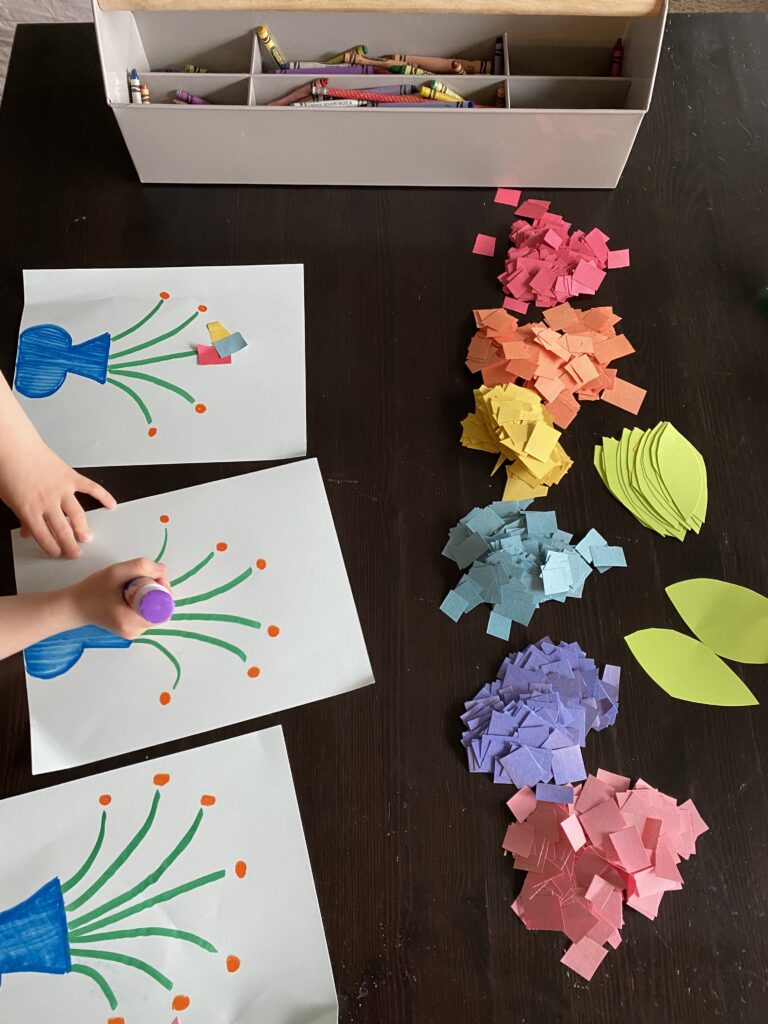
And finally, keeping in mind the underlying messages of this book—find joy in the ordinary things around you, use your talents to make the most of a less-than-ideal situation, try to brighten the lives of the people around you—there is an artproject that my preschooler and I did based on this book that you could also do with your children, no matter what age, that might help them and others cope with isolation right now. So what we did was: I drew a very simple vase with stems coming out of it (if your child is older, she could draw this herself) and I cut up pieces of different colored construction paper in little squares and triangles and I also cut out a few leaf-shaped pieces (again, if you have older children, they can do this themselves) and then my three year old used glue to paste the different pieces of paper on the stems to make a bouquet of cheerful, multicolored flowers. Then, he dictated a short little message that I wrote on the leaves.
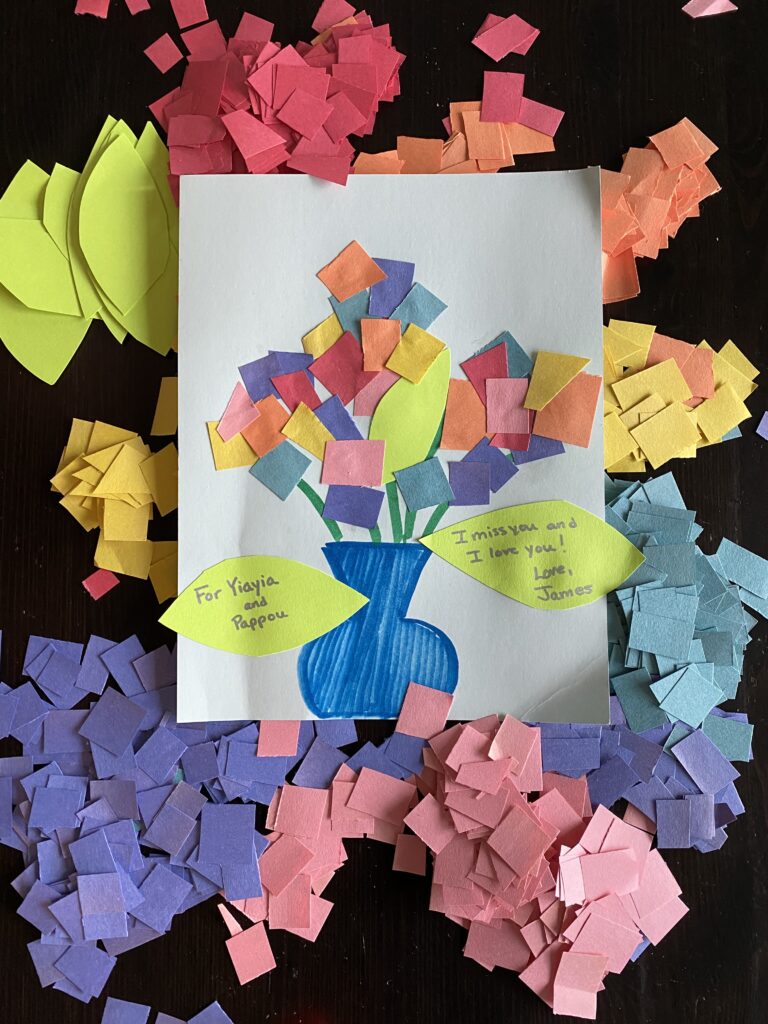
When the glue dried, we took three of the bouquets—one for my parents, one for my brother, and one for my sister—and delivered them to my parents’ doorstep as a little surprise. This was before we weren’t supposed to leave the house for anything except going to the hospital or grocery store, so if you aren’t leaving the house right now, you can take a picture of your child’s bouquet and send it to a person whom your child is missing or whom they think might be lonely or need cheering up right now. Anyway, this activity was really easy to do and it was a good way to incorporate art and a fine motor activity into our day. I actually had James cut out some of the little pieces of construction paper as well, which was also good scissor practice for him. It turned out to be a really cute, cheerful, fun project AND it kept him occupied for more than 2 seconds, which is always a win. And, best of all, it was a way to keep him connected with people he loves, but whom he can’t see right now. If you like this idea and want to try it with your kids, but you don’t want to draw the vase and stems yourself, I made a free printable PDF of a vase with flower stems that I put together that you can download and print. I’ll put a link to it in the shownotes, www.exquisitelyeverafter.com/episode3 along with some pictures of our bouquets if you want to see the end result.
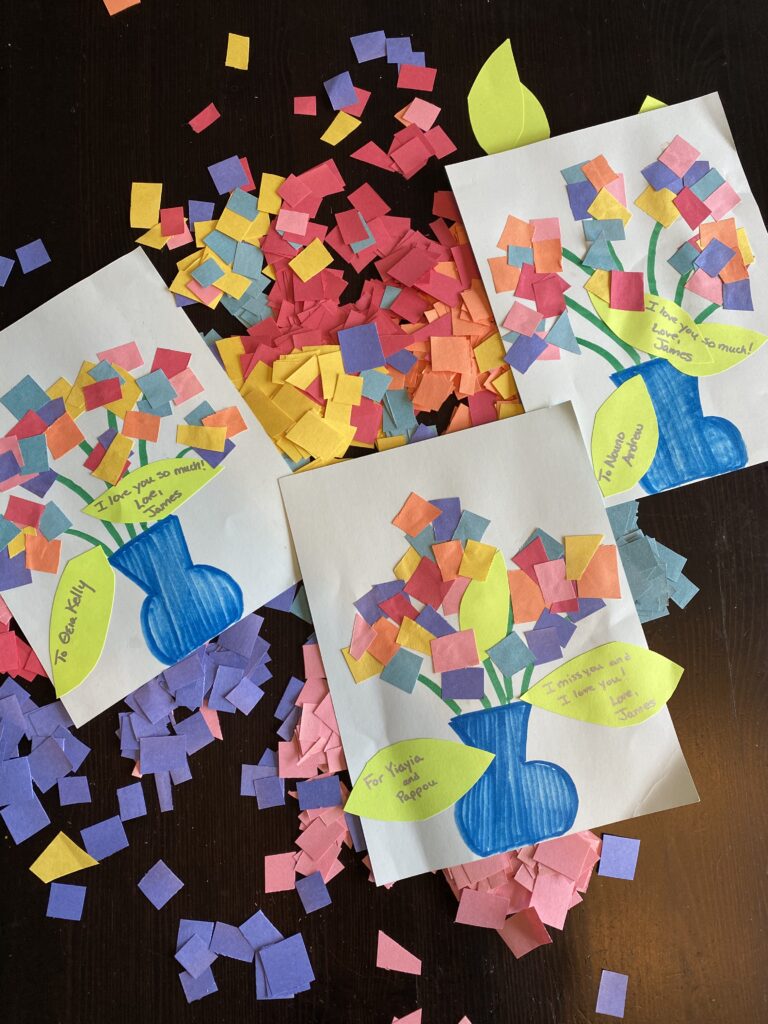
Before I talk about the last fictional book that I recommend you read to your older children or to your teenagers, I just want to mention two more non-fiction books that might be of use to you and your family right now, especially if you are noticing a significant decline in your child’s mental health as the weeks go on. These aren’t specifically about separation anxiety, but they can definitely be applied to it. And, I just want to say, I am neither a therapist nor a physician, and nothing can replace a therapist or physician if your child is in need of one. If your child’s mental health is suffering, definitely seek help by contacting a therapist who can set up a virtual meeting with you and your child and also consult your family physician or pediatrician about other things that you can do.
WHAT TO DO WHEN YOU WORRY TOO MUCH
However, because right now going to a therapist isn’t easy, there are two books on anxiety that I’d like to recommend. The first is for younger elementary school children and it’s called: What to Do When You Worry Too Much: A Kid’s Guide to Overcoming Anxiety (What-to-Do Guides for Kids) by Dr. Dawn Huebner and illustrated by Bonnie Matthews. This book has a bunch of cognitive behavioral techniques and exercises to help your child cope with challenges that might make him anxious. It’s a guide, but it’s also a workbook, which is nice because it’s good to have some concrete things you can do with your child to help him. Dawn Huebner is a clinical psychologist who specializes in the treatment of children and their parents and the book is published by the American Psychological Association, so all of the cognitive behavioral techniques that this book teaches are actually legitimately used in practice for the treatment of anxiety in children.
The second is for kids between the ages of about 9 and 13 and it’s called Outsmarting Worry: An Older Kid’s Guide to Managing Anxiety, also by Dr. Dawn Huebner and illustrated by Kara McHale. I like this one because it uses really accessible language so kids can catch on quickly, but its tone isn’t condescending so they don’t feel like they’re being talked down to. It explains to them what their brains are doing when they worry and how they can “outsmart” their brains by using specific coping strategies. It not only gives them calming techniques, but it also helps them develop the resilience necessary to move forward in their lives in a healthy, balanced way. So that’s a good option for your older kids.
HARRY POTTER AND THE DEATHLY HALLOWS
And finally, the last fictional book that I want to recommend that you read or re-read, just as a little bonus for older children or teens—or for YOU if you’re feeling anxious or frustrated that you can’t do more to help this situation—is Harry Potter and the Deathly Hallows. Because of course I am. For those of you who don’t know me, my Harvard dissertation focused very heavily on Harry Potter and like everyone else in the world, I am completely obsessed with these books and I want everyone to read them because not only do I think the series is a brilliant work of literature, but I think it makes you into a better human. I won’t get into it too much in this episode because I literally wrote over 300 pages on the subject—and who has that kind of time even in quarantine?—but, who knows, maybe you do and a deep dive into the genius of J.K. Rowling is just what you need right now so I’ll link my dissertation in the shownotes if you’re interested.
If you have not read the Harry Potter books yet, first of all, WHAT IS THE MATTER WITH YOU? Just kidding. Sort of. But seriously, if you haven’t read Harry Potter, this is the PERFECT time and you absolutely should. No spoilers yet, but this last Harry Potter book that I’m recommending is basically all about separation and widespread uncertainty and anxiety, but it is also about everyone coming together to try to protect all beings from a lethal, malevolent force. If you haven’t read the series yet, you will love it and so will your kids. If you and your kids have read it, this is the perfect time to re-read Book 7 because, first of all, we all need some collective Harry Potter nostalgia right now and second, we also need a book that gives us basically a roadmap of how to come together as a human race. So, anyway, because the last thing I want to do is ruin these incredible, brilliant books for you, if you haven’t read them, please skip ahead until the last two minutes of this episode so that I don’t ruin them for you. I’ll pause now for you to skip.
Okay, NOW the rest of us can dive in.
Now a pandemic isn’t exactly a malevolent force like Voldemort, but it certainly feels that way and it is definitely lethal to many of us and certainly has and will affect all of us in some way. J.K. Rowling is amazingly prescient and though I’m not saying she in any way predicted the corona virus or the methods and measures we’re taking to combat it, there are a lot of parallels in Book 7 to our situation right now. The widespread panic, businesses closing overnight like the shops in Diagon Alley, people essentially going into hiding with their families, the very inept political leaders, etc. ANYWAY. There are so many ways you can connect this book to our current situation. But, I think the most important thing to talk about with your kids as you read this book together are the many diverse and disparate ways that the characters contribute to the defeat of Voldemort and his ideology. Everyone has a role to play. Whether it’s Lee Jordan setting up a wizarding channel on the wireless to keep people abreast of the goings-on of the anti-Voldemort movement, or wizards casting protective charms over their muggle neighbors to safeguard them from the Death Eaters, or Muggleborn family members self-isolating and going on the run in order to protect their families, or people like Aberforth Dumbledore making sure people like Neville Longbottom who is on the front lines of the Hogwarts insurrection have food to eat and a safe place to go—everyone is doing something to combat the malignant forces at work, even if it seems small or insignificant.
Most obvious, of course, is the way Harry, Ron, and Hermione separate themselves from the wizarding community in order to find and destroy the Horcruxes. And it’s important when you and your children are reading this during this pandemic, to recognize or bring attention to the fact that the constant threat of Voldemort isn’t the only thing that takes its toll on the characters. In fact, the moments when they actually get to take action are almost a relief to them because remaining hidden away, not having any contact with their families and friends, and often feeling powerless when the trail runs cold or they hear news of something terrible that has happened that they couldn’t prevent—all of these things contribute to the three main characters’ suffering. At one point, these things actually do the most damage to the relationship among the three friends, which, I think we can all agree, is heartbreaking to witness. BUT what’s important is that, in the end, all of these sacrifices, all of the discomfort, all of the separation pays off. It was crucial to the success of their war against Voldemort. And it is the unity at the heart of the anti-Voldemort movement that ultimately defeats him—all of these people working together and doing their part for the good of the whole. It’s no accident that J. K. Rowling chose to have Neville Longbottom kill Nagini, the last Horcrux standing in the way of their victory over Voldemort. And that’s why his battle cry is “Dumbledore’s Army!” Neville represents all of the people who work behind the scenes, who humbly do their part to keep things going, who keep the faith and bravely keep on fighting. He’s a true hero, just as much as Harry is. Just as our grocery cashiers, sanitation workers, journalists, truckers, factory workers, farmers, security guards and receptionists in the hospitals and doctors’ offices are heroes for putting themselves at risk in order to keep our world functioning. So you can use this book as an example to your children of 1) why it’s so vitally important that we all do our part and stay home and self-isolate to give our healthcare workers a fighting chance and 2) how we can each use our talents to do something to help, whether it’s dropping off groceries to an elderly family member or neighbor, or donating food and supplies to organizations that need them, or simply making it a point to check in and cheer up a friend. All of these things are little acts of heroism that we need right now.
CHILDREN’S LITERATURE GROWS UP
Okay, that’s the end of my Harry Potter geekery for the time being. And, that’s also it for this episode of the Exquisitely Ever After podcast! Thank you all so much for listening, I really appreciate it! Please visit the show notes at, ExquisitelyEverAfter.com/episode3 for a complete list of the books that were mentioned today and you can also download the free printable PDF of the flower delivery craft if you’d like to make one with your child. And if you liked this episode or this podcast in general, please do subscribe, it’s totally, totally free and by subscribing you ensure that you don’t miss any new episodes. AND, if you have a minute in between homeschooling, or drive-by graduations, or zoom conferences ,or FaceTimeing the grandparents, please leave a review on iTunes. For a new show like mine, it helps so much.
I’d also love to hear if you have any other books that you would suggest or that you’re reading to help your children get through this really difficult time. If you do, please send me an email at christina@exquisitelyeverafter.com or dm me on Instagram at exquisitelyeverafter or leave me a comment on the blog post for this episode, exquisitelyeverafter.com/episode3. I would really appreciate it because, on a personal note, in my own family, my kids are really struggling being separated from my parents and siblings, whom they’re used to seeing pretty much every day. My dad is a family doctor and my mother works with him and my sister is also a family medicine resident on the frontline of this at the hospital and my brother is staying with my parents and working from home after leaving Manhattan almost 2 months ago, so we’ve been staying away to insure their safety and the safety of their patients, many of whom are elderly or otherwise vulnerable. It’s hard, but it’s necessary, and we’re so proud of them for the work that they’re doing.
So, yes, anyway, when I decided to start this podcast, I never thought that one of my first episodes would be about helping children cope with separation and anxiety during a global pandemic, but here we are. And reading these books aloud together these past few weeks has been really helpful for my own children so I wanted to share this list as soon as possible with you in the hopes that these books can also help your children cope with what’s happening and express their feelings about everything that’s going on.
I really appreciate that you took time to listen to me talk about reading to children today! Thank you so much again and thank you to the doctors, nurses, healthcare workers, the people in reception at our doctors’ offices and hospitals, sanitation workers, grocery store clerks, factory workers, postal workers and delivery drivers—you are all heroes and keeping our world turning. Thank you thank you thank you. Take care everyone, keep safe, and keep reading!
Pin This Episode for Later:
